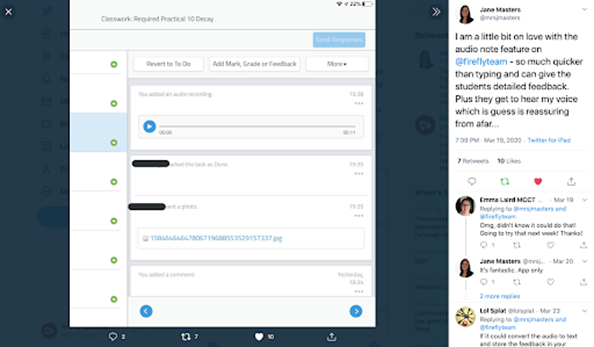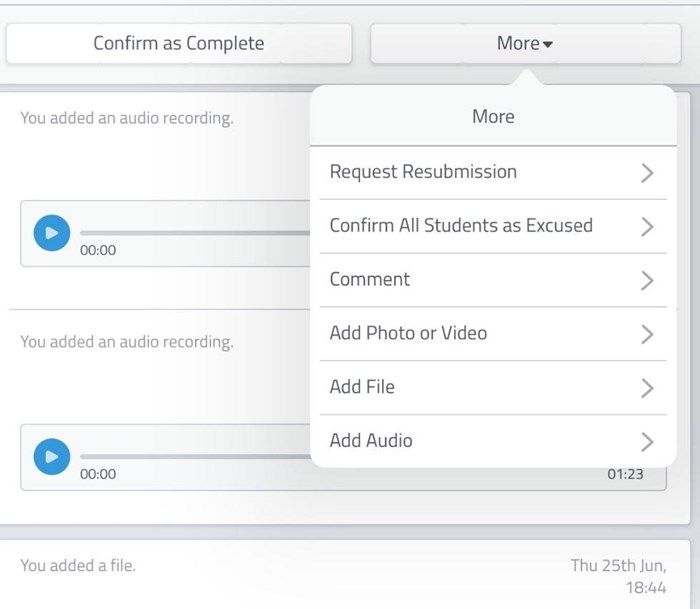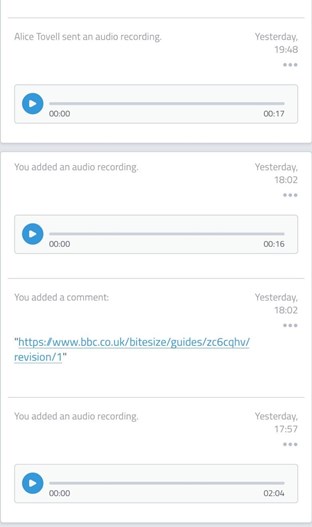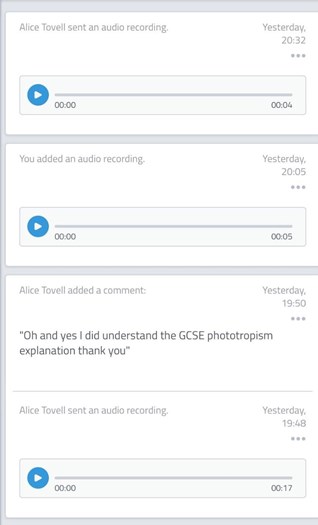We’re delighted to congratulate The Grange School for winning the #HeroesOfHomeLearning Most Innovative Award. This Award was specially chosen by one of our four expert judges, Craig Kemp - an EdTech consultant.
Craig shared that: Working with schools all over the world over the past 3 months with remote learning, the biggest complaints were connection, collaboration, feedback and workload.
Seeing the audio feedback being used to help bridge the gaps made my heart warm. Teachers being authentic, purposeful and creative about their use of Firefly to connect, share learning and feedback with their students made me super happy.
We caught up with Jane Masters, a Biology teacher and Y7 tutor at The Grange School to discover how Audio Feedback has helped to transform teaching and learning during the recent lockdown.

When did you start using the Firefly Audio feature?
I have been using the Firefly app for two years now but have only recently discovered and started using the “add audio” function. I started doing it for my own ease; I could have the student’s work open on my laptop and use the app on my iPad to add little notes as I get to particular issues, e.g. “Evie, I’m looking at your question 5 right now. It’s absolutely correct, but where you’ve said X, you could be even more specific by saying Y…”.

How has it impacted on student engagement?
This year I have used the audio note feature a lot for GCSE classes and noticed where I left an audio recording of me saying something along the lines of “well done, you’ve done really well on this. Please don’t forget to go back through the mark-scheme I’ve attached and pop some corrections onto your work” I had far more engagement with my feedback than if I left the same comment as text. Students suddenly started replying to me! It was also great for follow up questions to extend their thinking; an audio comment was far more likely to lead to a response from the students.
How has it supported you with marking and grading?
From a productivity point of view I also find it much quicker to leave detailed audio feedback than written feedback. Students can playback the feedback and action it just as easily.
One of my Year 12 students, Evie, said “The audio comments are useful as they help you to maintain a relationship with your teacher that is otherwise lost when only using text. I find it easier to understand a concept when I can hear it rather than just read about it”. I completely agree with her; the audio notes allow me to add a little nuance to my feedback, adding emphasis to specific words which gets the message across much better than a typed comment. Likewise, kindness and empathy are more likely to come across in an audio comment compared to a text comment; I bet we’ve all had situations before where we have misinterpreted the tone in a text message!
Yesterday I was able to have a full conversation with one of my Year 7 students about phototropism (see screenshots below) after she sent me a time-lapse video of some seedlings she has been growing bending towards the light. Whilst this conversation might have waited until we had our next live video lesson, it was nice to be able to give her this individual extension work immediately and check her understanding, plus those same one-to-one conversations as just not practical in a live video lesson.


What other benefits have you noticed?
From a pastoral point of view, audio comments have been great during lockdown. Students are also able to send audio comments to their teachers and it’s an easy way of keeping in contact with my form. Every morning we have a “Morning Registration” task with a video of a few chapters of our reading book, or a quiz, or a zoom meeting and it’s nice to be able to leave a little personalised audio “hello” to check in on them. Some students like to send them back to me, so I’ve received some nice messages recorded whilst on dog walks or while setting up for a day of home learning. It’s such a simple tool, but I hope it’s gone some way to maintain links between home and school.
This is just one of our 4 winning entries. To explore more #HeroesOfHomelearning winners visit our celebration page.

